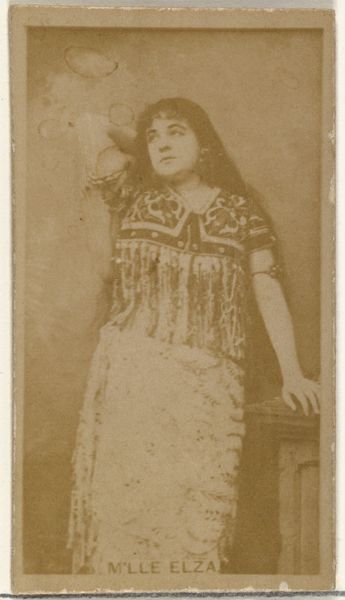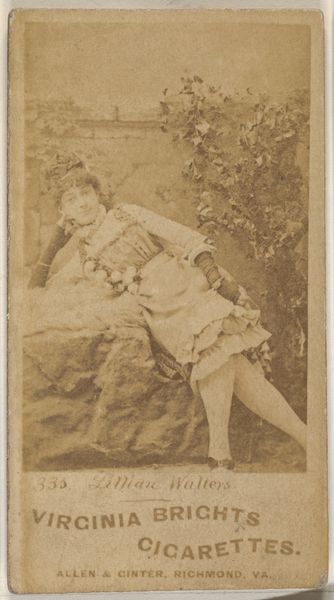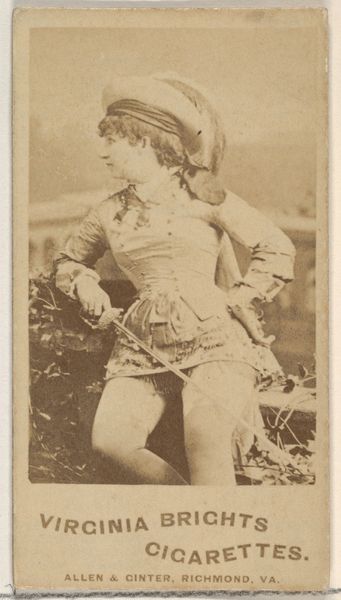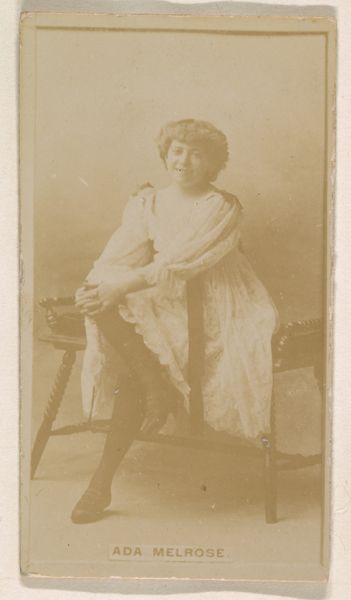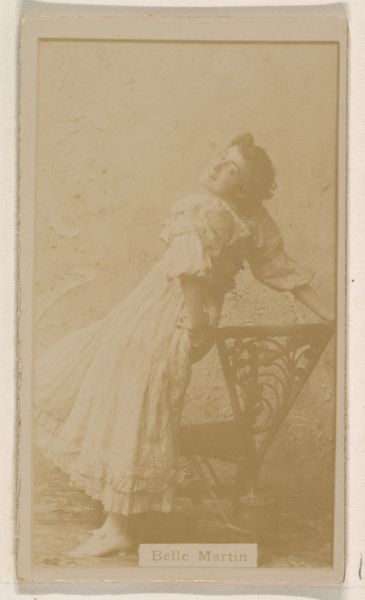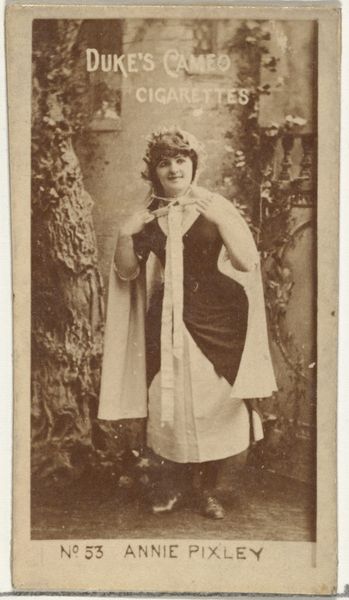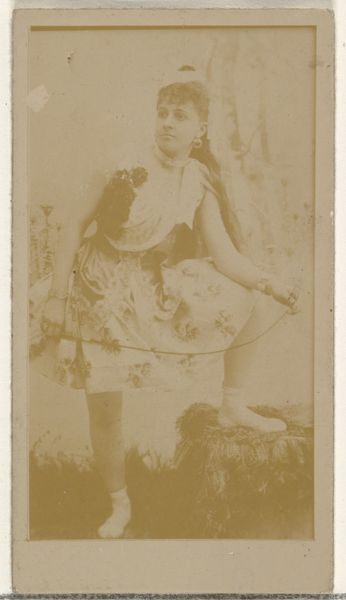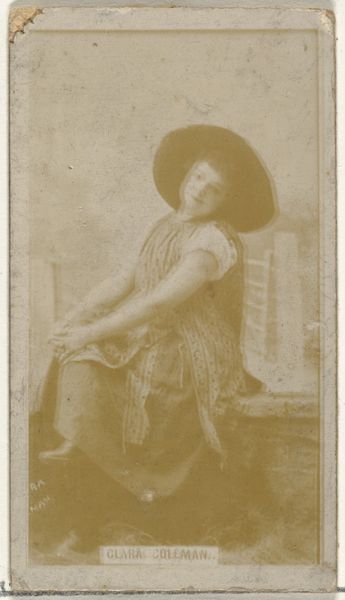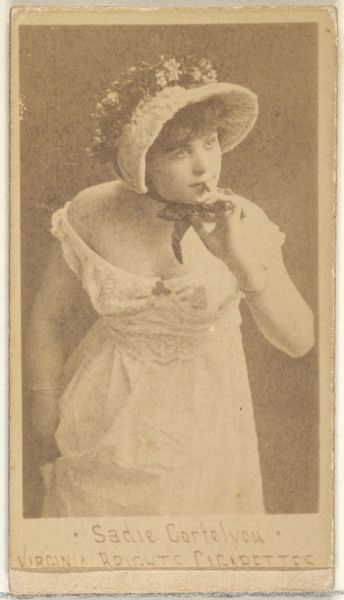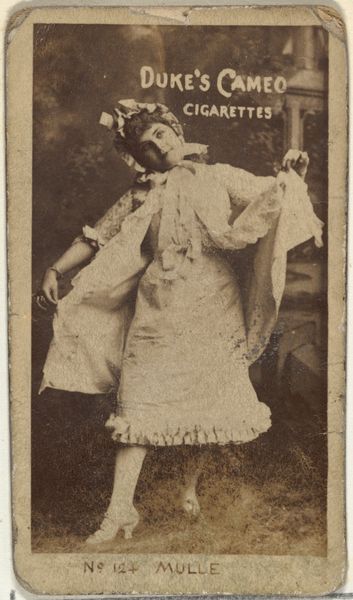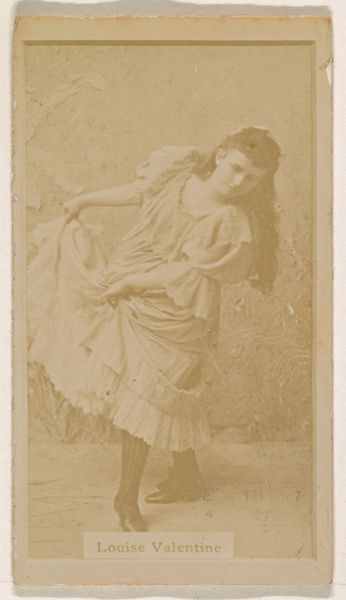
Lina Sandall, from the Actors and Actresses series (N45, Type 1) for Virginia Brights Cigarettes 1885 - 1891
0:00
0:00
drawing, print, etching, photography
#
portrait
#
drawing
# print
#
etching
#
photography
Dimensions: Sheet: 2 3/4 x 1 3/8 in. (7 x 3.5 cm)
Copyright: Public Domain
Curator: This is a fascinating artifact: "Lina Sandall, from the Actors and Actresses series (N45, Type 1) for Virginia Brights Cigarettes," created between 1885 and 1891 by Allen & Ginter. It combines photography with elements of etching and drawing, and it now resides here at The Met. Editor: It’s strikingly pensive, wouldn't you agree? She’s posed kneeling, her gaze averted, with the hint of a troubled expression. I find that curious given it was intended as an advertisement. Curator: The averted gaze definitely draws the eye. Lina Sandall's gesture—leaning on what appears to be a stone—suggests reflection, perhaps even a degree of melancholy, a very familiar theme found across different cultures for centuries. We might consider the tradition of representing the thoughtful or penitent figure in art. Editor: Right, but let’s not divorce this image from its intent. This wasn’t meant to convey some timeless truth. This image was meant to sell cigarettes! Positioning Sandall, an actress, aligns smoking with a sophisticated lifestyle. It also perpetuates, rather problematically, the idea of the female performer as a figure available for consumption and desire. Curator: But even in the commodified context, the composition carries weight. Note how her attire is rendered. The details of her garment, with its bands and trim, point to a kind of... presentation of otherness, hinting towards ethnic dress maybe. Editor: Yes, a hyper-theatrical ‘ethnic drag’ deployed for the enjoyment of the consumer. The so-called “exotic” or "foreign" woman has historically been packaged to reinforce existing colonial hierarchies, all while she sells product. Sandall herself becomes a symbol laden with stereotypes. Curator: True. It reminds us how pervasive these images were. These cards circulated widely, embedding these archetypes deep into the public consciousness, not to mention into their personal collections. Editor: Absolutely. Even within the constrained format, art has the power to both reflect and shape perceptions, often reinforcing the inequalities of its time. This innocuous cigarette card reveals far more about late 19th century social dynamics than first meets the eye. Curator: Indeed, analyzing even a seemingly simple portrait like this gives a sense of the subtle mechanisms of cultural transmission. It speaks volumes. Editor: And forces us to confront the commercialized objectification of talent and identity – a thread we continue to pull in the entertainment industry today.
Comments
No comments
Be the first to comment and join the conversation on the ultimate creative platform.

